Korean rice cakes, or tteok, are the essential building block of any authentic Tteokbokki dish. Making them at home adds a fresh, chewy texture that elevates the dish beyond the store-bought version. Below, you’ll learn about the ingredients, tools, and exact steps to make them from scratch.
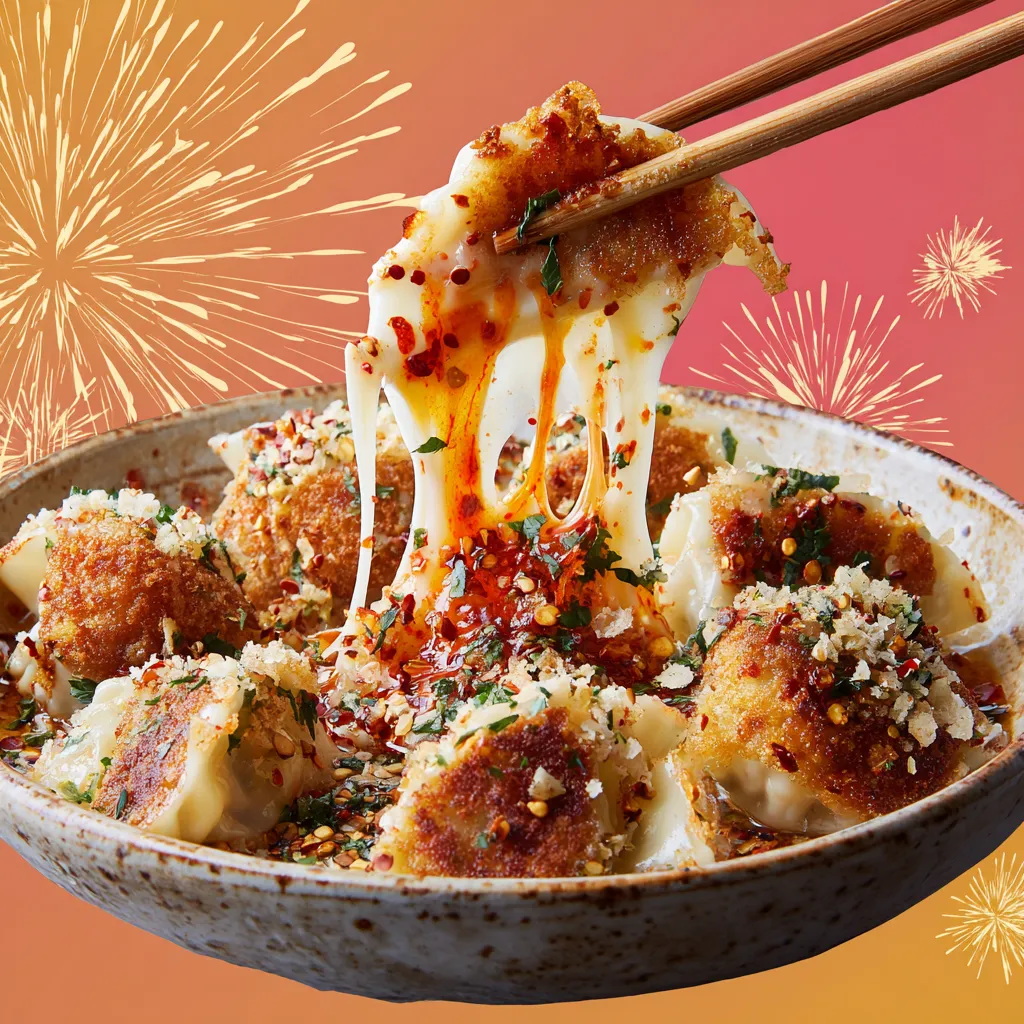
Table of Contents
What Are Korean Rice Cakes (Tteok)?
Tteok (떡) are traditional Korean rice cakes made from glutinous rice flour (sweet rice flour) or regular rice flour. For Tteokbokki, we use garaetteok long, cylindrical rice cakes with a chewy bite. These are steamed and then cut into small pieces perfect for simmering in spicy sauces.
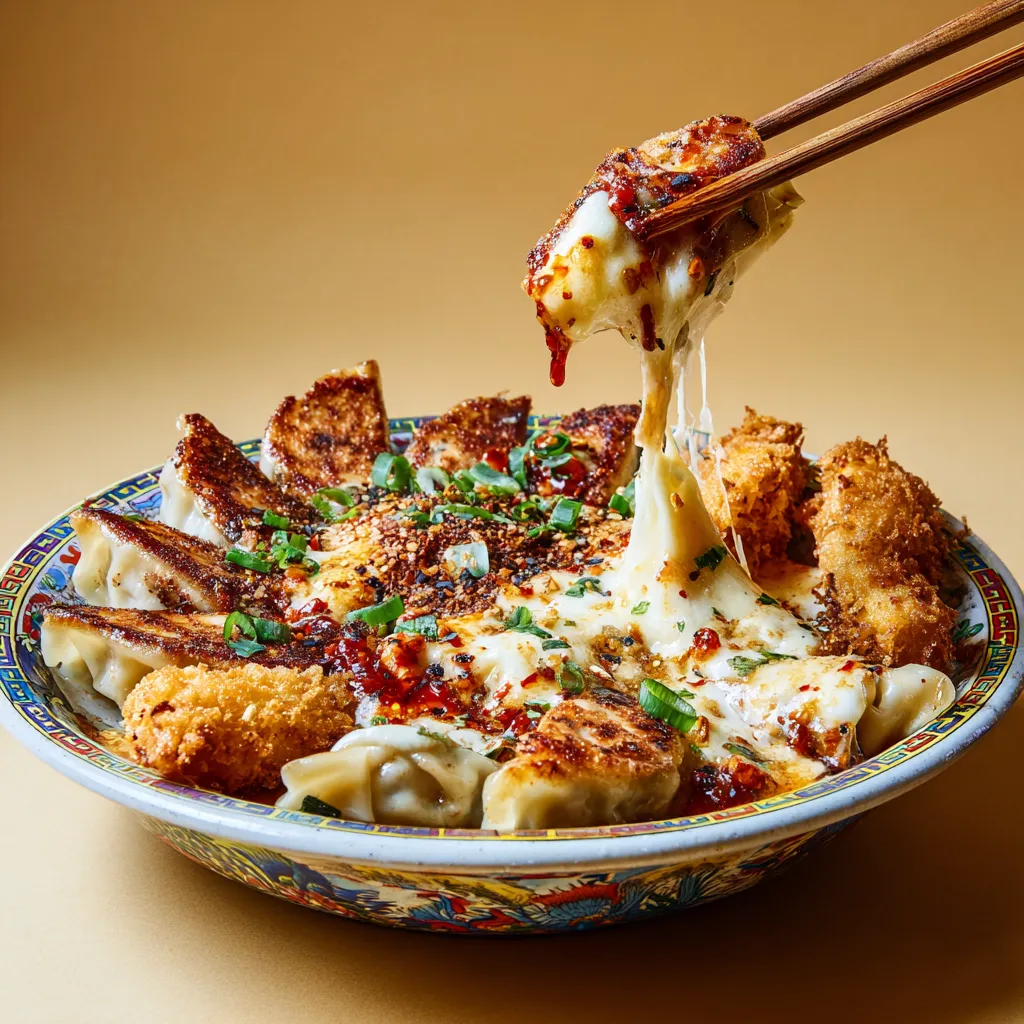
Why Make Them at Home?
- Freshness: Homemade rice cakes are softer and more flavorful.
- Control: Choose your own ingredients and avoid preservatives.
- Texture: Adjust the chewiness to your liking.
- Satisfaction: There’s something rewarding about making this Korean staple from scratch.
Ingredients You’ll Need
- 2 cups sweet rice flour (glutinous rice flour)
- ¾ cup water (adjust if needed)
- ¼ tsp salt
- Optional: ½ tsp sesame oil (for shaping or kneading)
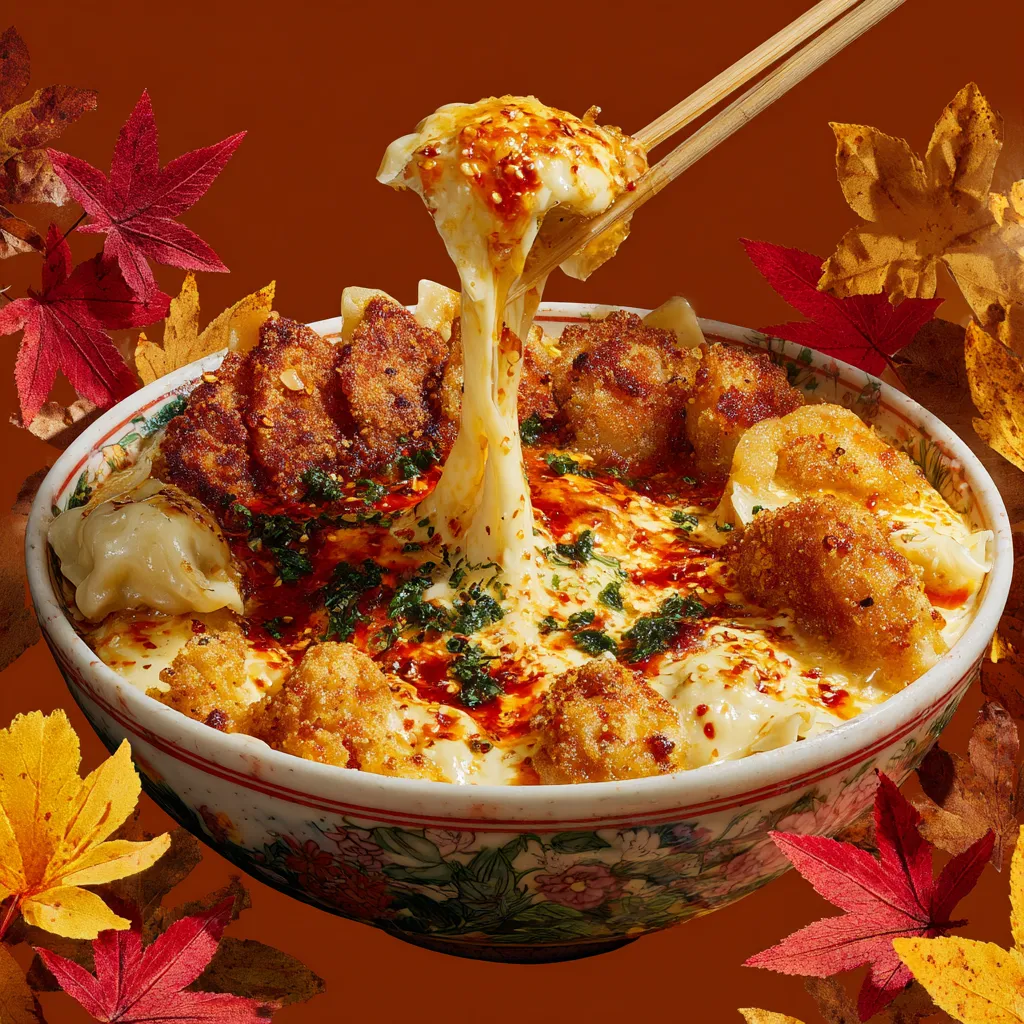
Tools Required:
- Steamer or steaming pot
- Heatproof dish or bowl
- Parchment paper or cheesecloth
- Plastic gloves (for hot dough handling)
- Rolling pin (optional, for shaping)
Step-by-Step Instructions:
- Prepare the Dough
In a bowl, mix sweet rice flour and salt. Gradually add water, stirring until you get a thick, sticky batter. - Steam the Dough
Pour the mixture into a heatproof, parchment-lined dish. Steam for 20–25 minutes, or until fully cooked and translucent. - Knead the Dough
While the dough is still hot (use gloves!), knead it for 5–10 minutes until it becomes smooth and elastic. - Shape the Rice Cakes
Roll the dough into long logs about thumb-thick. Let cool slightly, then cut into small, bite-sized pieces. - Use or Store
Use immediately in your Tteokbokki, or store in the fridge (up to 3 days) or freezer (up to 1 month).
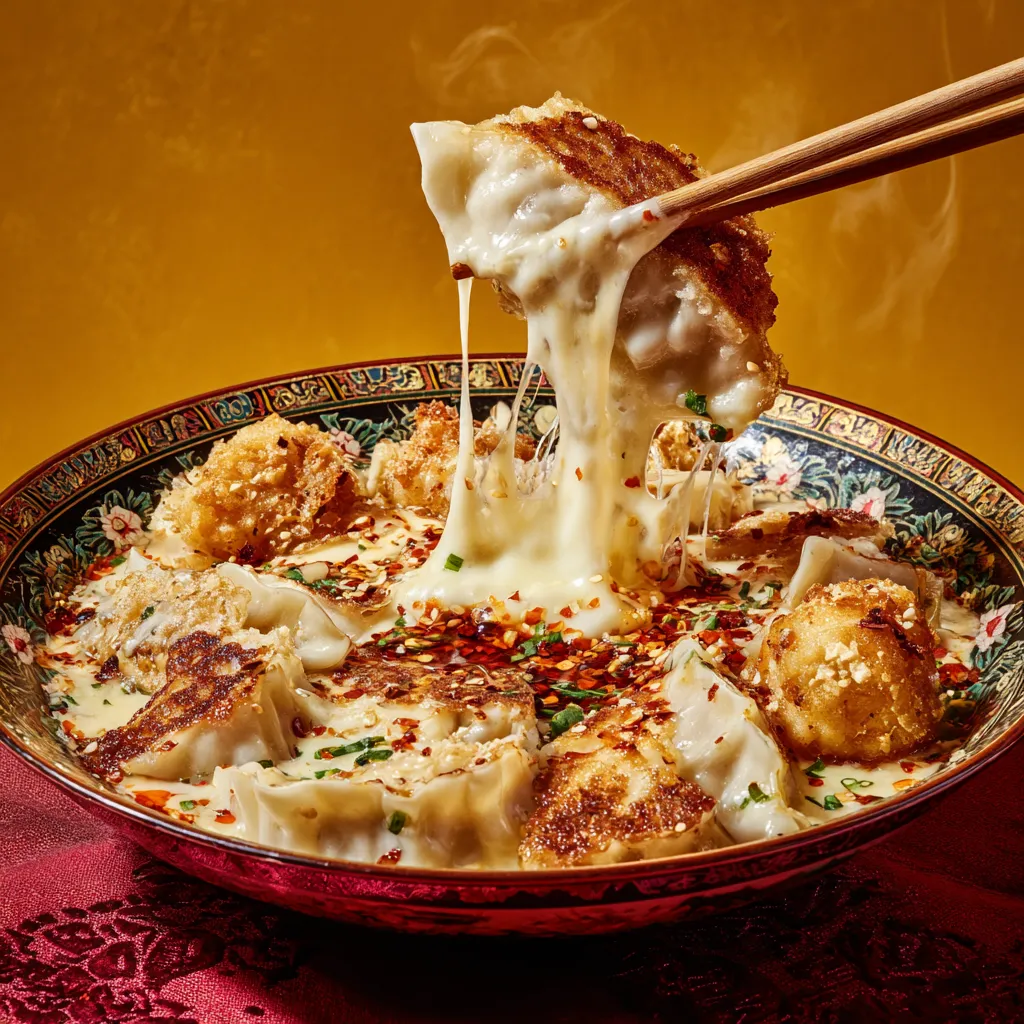
Tips for Success
- Use glutinous rice flour, not regular rice flour.
- Kneading while hot is key to getting the right chewiness.
- If dough is too dry, add water a tablespoon at a time.
- Use a light coat of sesame oil or gloves to prevent sticking.
Why Bake the Rice Cakes?
While steaming is the traditional way to cook Korean rice cakes, baking offers a few unique benefits especially if you’re making them from scratch at home. Here’s why baking your rice cakes can be a game-changer for your Tteokbokki:
Enhanced Texture
Baking helps develop a slightly firmer exterior while keeping the inside soft and chewy. This texture contrast allows the rice cakes to hold their shape better when simmered in spicy sauce, preventing them from becoming mushy.
Convenience and Consistency
If you don’t have a steamer or prefer a more hands-off approach, baking is incredibly convenient. You can place the dough in the oven and let it cook evenly without needing to monitor water levels or steam time.
Better Browning (Optional Step)
After baking, you can lightly pan-fry or broil the rice cakes for a toasty, golden surface. This adds extra flavor and creates a subtle crispy layer that contrasts beautifully with the creamy cheese and sauce in Tteokbokki.
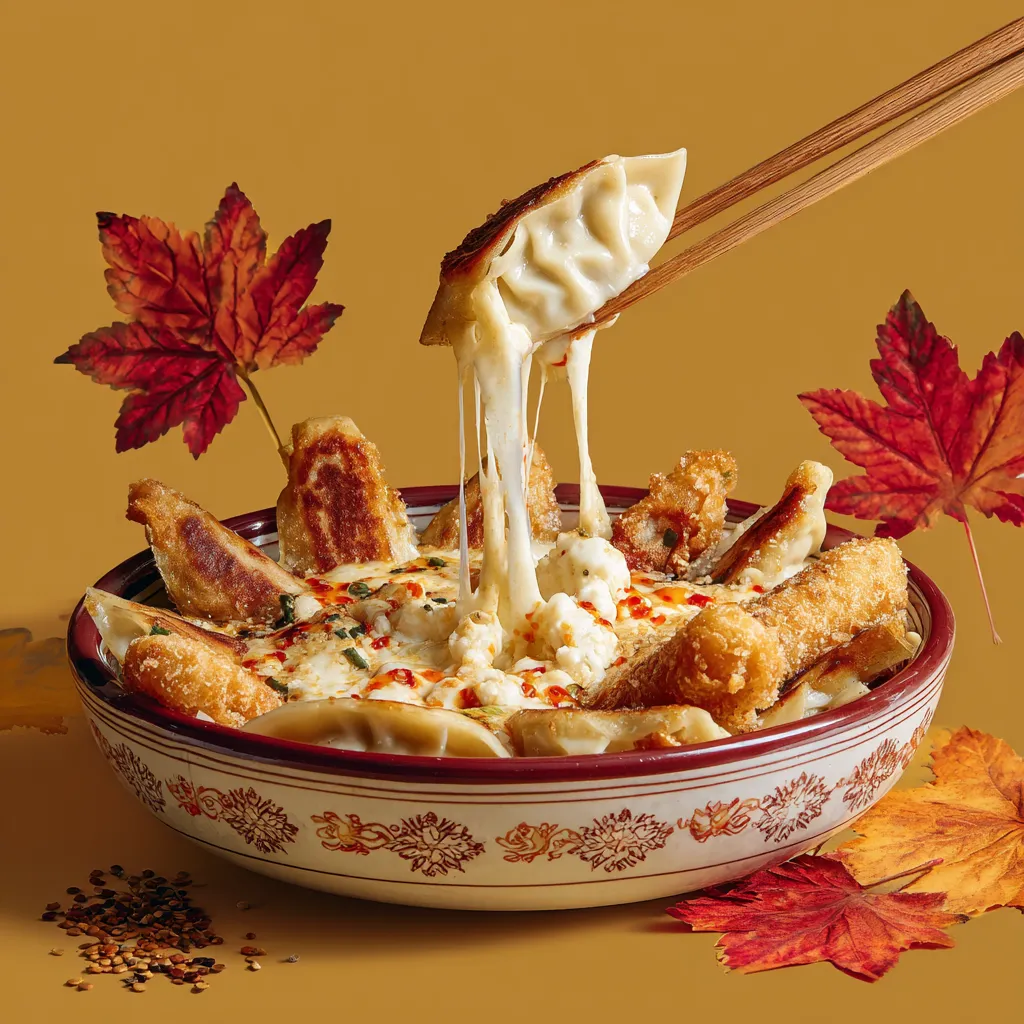
Ideal for Freezing and Reheating
Baked rice cakes tend to hold their texture better when frozen and reheated. If you’re planning to make a big batch and store some for later, baking is a great option.
Can I Skip the Baking Step?
Yes, you can skip the baking step — but it depends on your cooking method, your preferred texture, and whether you’re using homemade or store-bought rice cakes.
If You’re Using Store-Bought Rice Cakes
You can skip baking entirely. Most store-bought tteok are pre-steamed and only need to be softened by soaking in water or boiled briefly before adding to your sauce. Baking them would be unnecessary and could even make them too dry or rubbery.
If You’re Using Homemade Rice Cakes
If you’ve just steamed the rice cakes fresh, you can also skip baking but you’ll miss out on the slightly firmer texture and extra chewiness that baking adds.
- Skip baking if you prefer a soft, melt-in-your-mouth texture.
- Keep baking if you like a firmer bite and plan to simmer them in sauce for longer.
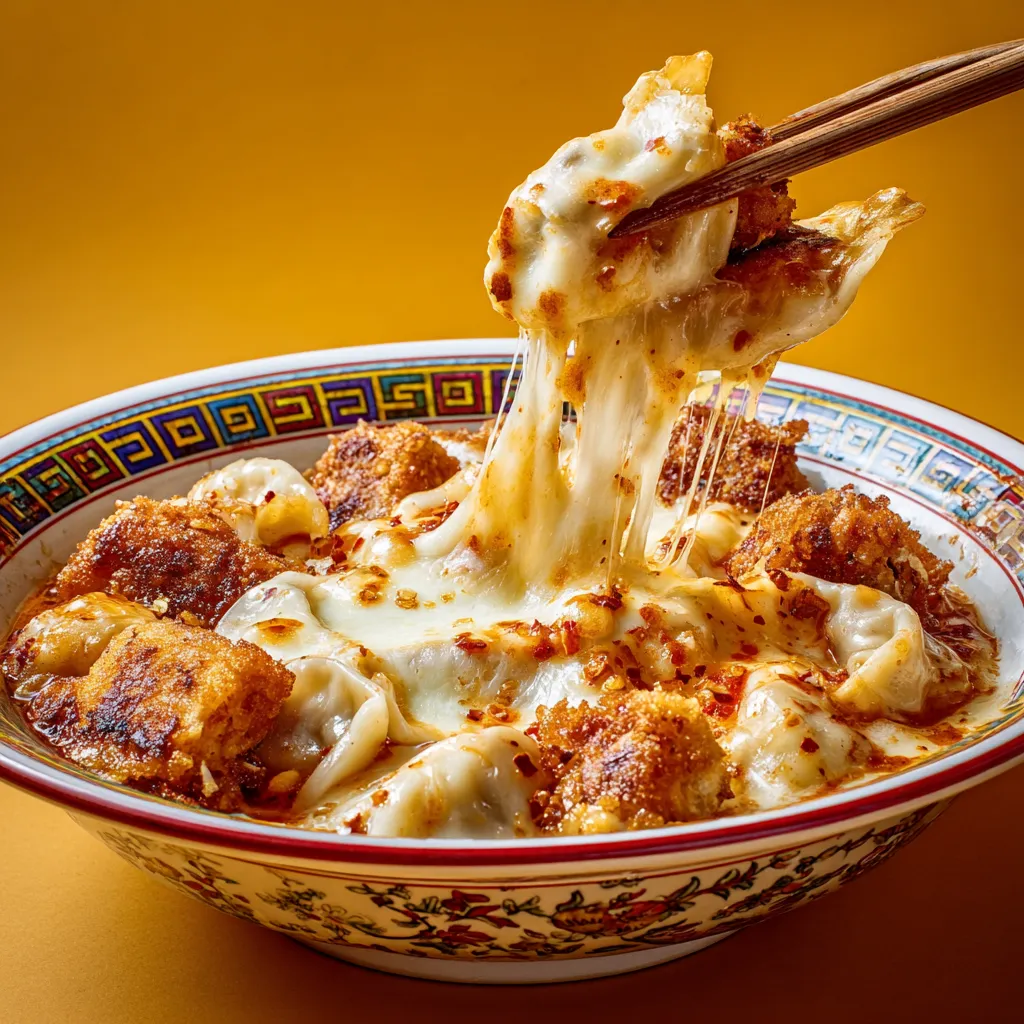
When Baking Is Recommended
- You’re storing rice cakes for later use (baked cakes hold up better).
- You’re planning to pan-fry or broil them before adding to the dish.
- You want a slightly crispy outer layer for texture contrast.
Bottom Line
You can skip baking, especially if you’re short on time or prefer a softer texture. But for a chewier bite and better durability in sauce, baking is a great extra step.
Korean Dashi or Fish Sauce
When making Tteokbokki, the base flavor of your sauce is just as important as the rice cakes or cheese. In Korean cooking, you’ll often see recipes call for Korean dashi or fish sauce both bring deep, umami flavor, but they work differently. Let’s break it down:
What Is Korean Dashi?
Korean dashi is a light, flavorful broth made by simmering ingredients like:
- Dried kelp (dashima)
- Dried anchovies
- Radish
- Onion
This broth is used as a base in many Korean soups and stews, including Tteokbokki. It adds subtle seafood and savory notes without overpowering the dish.
What About Fish Sauce?
Fish sauce is a fermented liquid condiment made from anchovies and salt. It has a strong, salty, and umami-rich flavor. A small amount goes a long way and gives your sauce depth and complexity.
Which One Should I Use?
- Use Korean dashi if you want a lighter, more traditional flavor and plan to simmer your sauce longer.
- Use fish sauce if you want a quicker method with bold flavor and don’t have time to make broth.
- Some recipes even use both dashi as the base and a splash of fish sauce for extra depth.
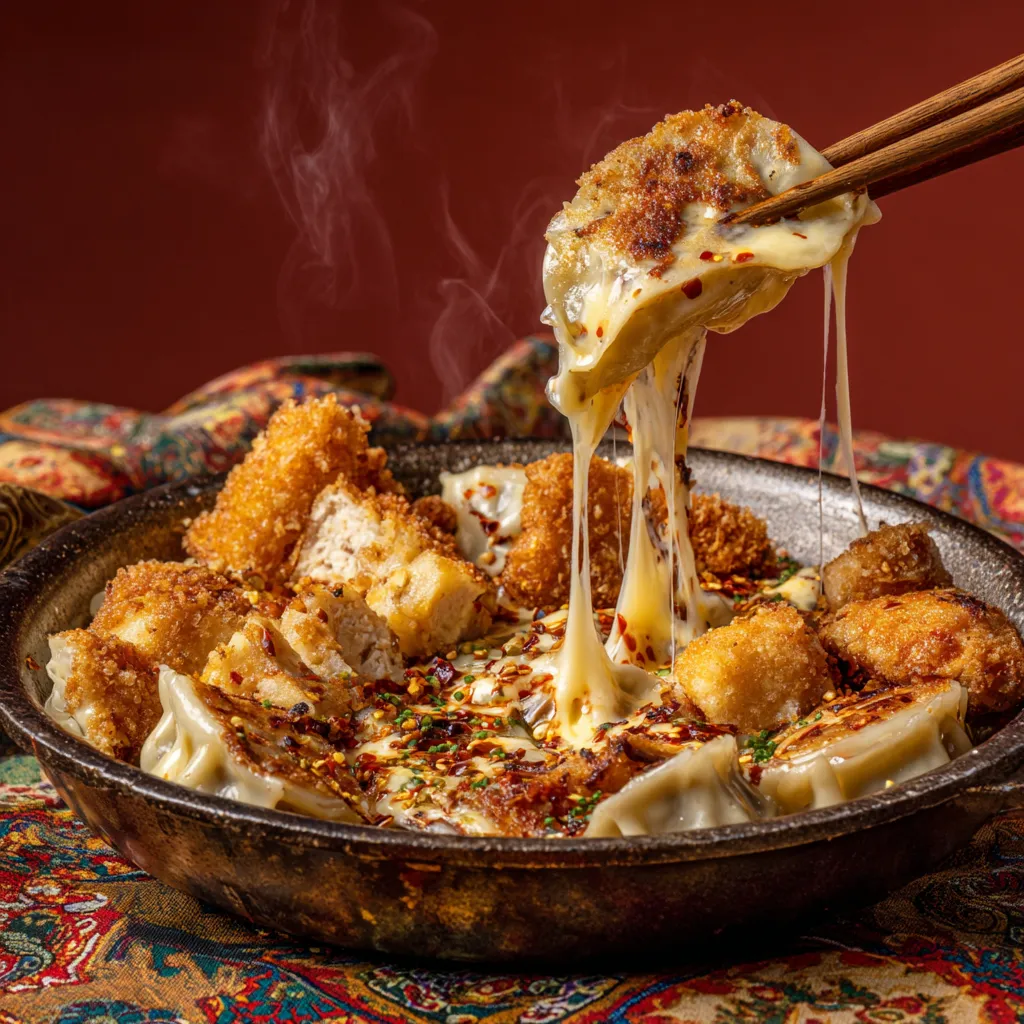
Can I Substitute?
Yes! If you can’t make dashi, try one of these:
- Low-sodium chicken or vegetable broth (milder flavor)
- Water + fish sauce + a pinch of sugar
- Japanese dashi powder (quick and easy)
Tip:
If using fish sauce, start with 1–2 teaspoons and taste before adding more — it’s very potent!
Equipment You Will Need
Making homemade rice cakes for Cheese Tteokbokki doesn’t require fancy tools, but having the right equipment can make the process smoother, safer, and more enjoyable. Here’s what you’ll need from prep to finish:
For Making the Rice Cakes
- Mixing Bowl
To combine your rice flour, salt, and water into a smooth dough. - Steamer or Steaming Pot
Essential for cooking the rice flour mixture evenly and gently. - Heatproof Dish or Bowl
Used to hold the dough mixture inside the steamer. Glass or stainless steel bowls work best. - Parchment Paper or Cheesecloth
Lining your steaming container prevents sticking and makes cleanup easy. - Plastic or Silicone Gloves
For kneading the hot dough without burning your hands. - Rolling Pin or Hands
To shape the dough into smooth, even logs (optional but helpful for consistent thickness).
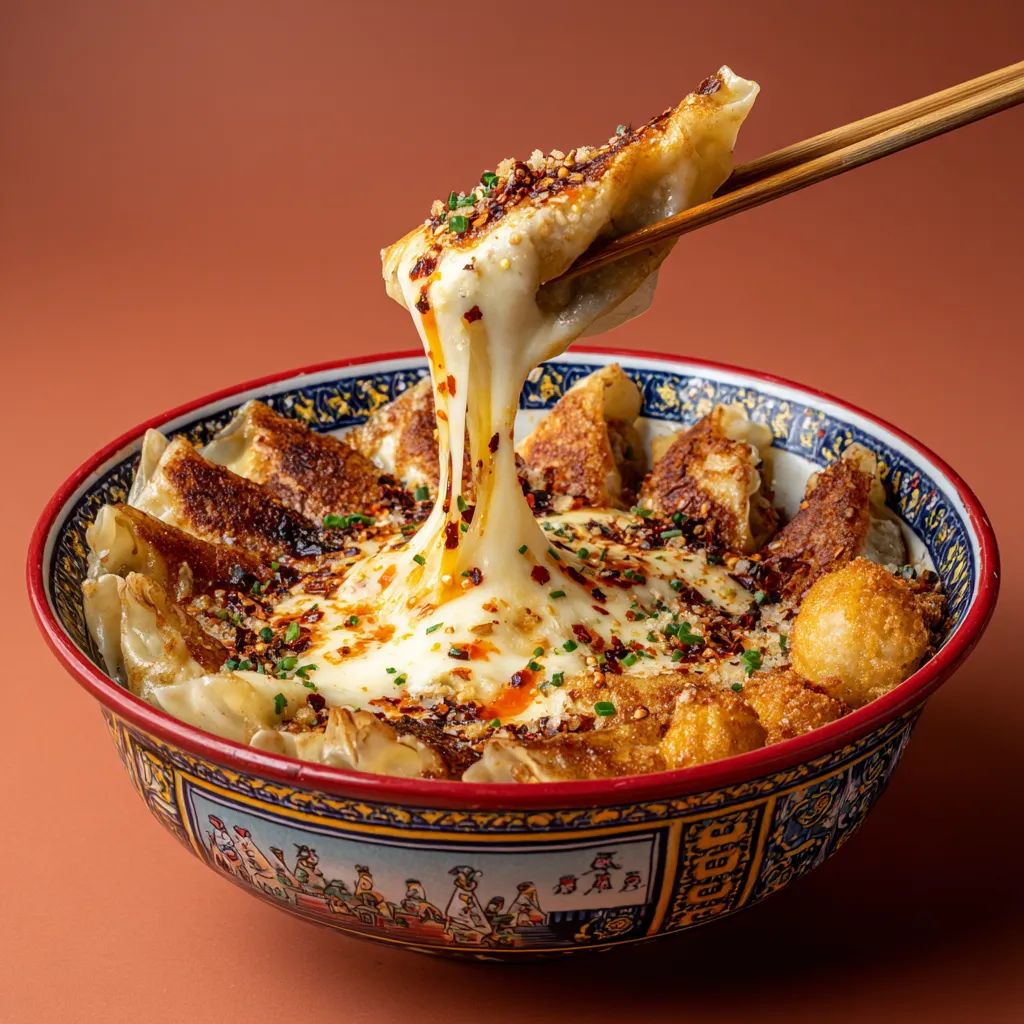
For Baking (Optional Step)
- Baking Sheet
If you choose to bake instead of steam, use a flat baking tray lined with parchment paper. - Oven
A standard oven works well for firming up the rice cakes and improving texture.
For Cheese Tteokbokki Assembly
- Non-Stick Pan or Skillet
To simmer the rice cakes in the spicy cheese sauce. - Spatula or Wooden Spoon
For stirring the sauce and evenly coating the rice cakes. - Serving Dish or Bowl
Choose something heat-safe and deep enough to hold the cheesy, saucy goodness.
INGREDIENTS List
To make the ultimate Cheese Tteokbokki from scratch including homemade rice cakes and a rich, spicy-cheesy sauce — here’s everything you’ll need:
For the Homemade Rice Cakes (Garaetteok)
- 2 cups sweet rice flour (glutinous rice flour)
- ¾ cup water (adjust slightly as needed)
- ¼ teaspoon salt
- (Optional) ½ teaspoon sesame oil – for kneading and shaping
For the Tteokbokki Sauce
Sauce Ingredients
- 2 tablespoons gochujang (Korean red chili paste)
- 1 tablespoon gochugaru (Korean red pepper flakes – adjust for spice level)
- 1 tablespoon soy sauce
- 1 teaspoon sugar (or honey)
- 2 cloves garlic, minced
- 1 cup Korean dashi broth (or water + 1 tsp fish sauce)
- (Optional) 1 teaspoon fish sauce for extra umami
Other Ingredients
- 1–2 cups Korean rice cakes (homemade or store-bought)
- ½ cup shredded mozzarella cheese (or more, to taste)
- 1 boiled egg, halved (optional)
- Green onions, chopped (for garnish)
- Sesame seeds (optional garnish)
Step-by-Step INSTRUCTIONS
Follow these detailed steps to make delicious Cheese Tteokbokki from scratch including homemade rice cakes and a spicy, cheesy sauce that melts perfectly over every bite.
Step 1 – Make the Rice Cakes (Garaetteok)
- Mix the Dough
In a mixing bowl, combine 2 cups sweet rice flour, ¼ tsp salt, and ¾ cup water. Stir until smooth and thick. - Steam the Dough
Transfer the mixture into a parchment-lined heatproof dish. Steam over high heat for 20–25 minutes, until translucent and firm. - Knead While Hot
Using gloves, knead the hot dough for 5–10 minutes until smooth, stretchy, and slightly glossy. - Shape into Logs
Roll the dough into long cylinders about thumb thickness. Let cool slightly, then cut into bite-sized pieces.
Optional: Bake the rice cakes at 350°F (175°C) for 10 minutes for a firmer, chewier texture.
Step 2 – Make the Tteokbokki Sauce
- Prepare the Broth
In a pan, add 1 cup Korean dashi or water. Bring to a light simmer. - Add Sauce Ingredients
Stir in:- 2 tbsp gochujang
- 1 tbsp gochugaru
- 1 tbsp soy sauce
- 1 tsp sugar
- 2 minced garlic cloves
- (Optional) 1 tsp fish sauce
- Simmer the Sauce
Let the sauce simmer for 3–5 minutes until slightly thickened.
Step 3 – Add Rice Cakes and Simmer
- Add Rice Cakes
Drop in your homemade (or store-bought) rice cakes. Stir to coat them in the sauce. - Simmer Until Tender
Cook on medium heat for 8–10 minutes, stirring occasionally until the sauce thickens and the rice cakes are chewy and soft.
Step 4 – Add Cheese and Finish
- Add Cheese
Sprinkle ½ cup (or more) shredded mozzarella cheese over the hot Tteokbokki. - Melt the Cheese
Cover the pan with a lid and let sit for 1–2 minutes, until the cheese is melted and gooey. - Serve Immediately
Garnish with sliced green onions and sesame seeds, and serve hot!
My Other Korean Recipes You Will Also Like:
If you loved making Cheese Tteokbokki, you’ll definitely enjoy these other delicious and authentic Korean recipes. Each one brings bold flavors, comforting textures, and that irresistible Korean touch to your table.
Spicy Korean Kimchi (Fermented Napa Cabbage)
A staple side dish made with fermented cabbage, garlic, and gochugaru. Tangy, spicy, and packed with probiotics.
Sundubu Jjigae (Soft Tofu Stew)
A warming stew made with silken tofu, vegetables, and your choice of seafood or beef in a spicy broth.
Bibimbap (Korean Mixed Rice Bowl)
Colorful, nourishing, and customizable bibimbap is a bowl of warm rice topped with seasoned vegetables, meat, a fried egg, and spicy gochujang.
Korean Dumplings (Mandu)
Crispy or steamed dumplings filled with a mixture of pork, tofu, and veggies perfect as a snack or appetizer.
Tteokkochi (Korean Rice Cake Skewers)
Grilled rice cakes coated in a spicy-sweet glaze a popular street food with a crispy outside and chewy inside.
Hwachae (Korean Fruit Punch)
A refreshing, lightly sweetened fruit bowl drink, often served cold — ideal as a summer dessert.
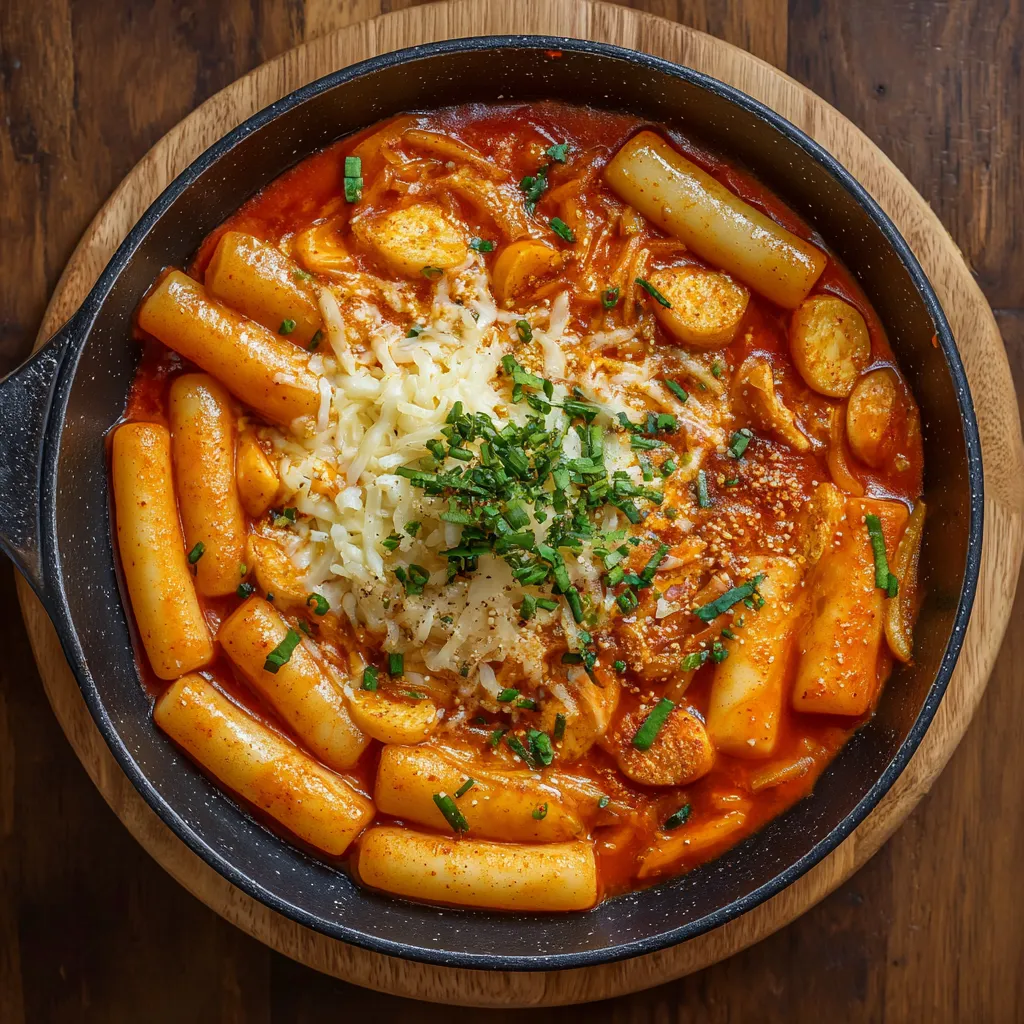
Cheese Tteokbokki (Made with Homemade Rice Cakes)
A creamy, spicy, and chewy comfort dish made entirely from scratch. This section summarizes everything you need to recreate Cheese Tteokbokki at home, using homemade garaetteok (Korean rice cakes).
Equipment
- Mixing bowl
- Steamer or steaming pot
- Heatproof dish or bowl
- Parchment paper or cheesecloth
- Gloves (for kneading hot dough)
- Rolling pin (optional)
- Non-stick pan or skillet
- Spatula or wooden spoon
- Serving bowl or dish
Ingredients
For the Sauce
- 2 tbsp gochujang (Korean chili paste)
- 1 tbsp gochugaru (Korean chili flakes)
- 1 tbsp soy sauce
- 1 tsp sugar
- 2 garlic cloves, minced
- 1 cup Korean dashi (or water + 1 tsp fish sauce)
- (Optional) 1 tsp fish sauce for more umami
Other Ingredients
- 1–2 cups homemade rice cakes (garaetteok), sliced
- ½ cup mozzarella cheese (or more, to taste)
- 1 boiled egg, halved (optional)
- Green onions and sesame seeds for garnish
Instructions
- Make the rice cakes: Mix, steam, knead, and shape the rice flour dough as detailed above. Slice into bite-sized pieces.
- Prepare the sauce: In a pan, simmer the broth and stir in gochujang, gochugaru, soy sauce, sugar, and garlic.
- Cook the rice cakes: Add the sliced rice cakes to the sauce and simmer for 8–10 minutes until soft and chewy.
- Add cheese: Sprinkle mozzarella over the top, cover, and let it melt.
- Serve hot: Garnish with chopped green onions and sesame seeds.
15 Comments
Join the conversation! Here’s what others are saying about this Cheese Tteokbokki (made with homemade rice cakes) recipe. Have a question, tip, or feedback? Don’t hesitate to share below.
H3: Leave a Reply
Your email address will not be published. Required fields are marked *.
Name*[david ]
Website[https://dailydishfresh.com/]
Recipe Notes & Tips for Cheese Tteokbokki
Make your Cheese Tteokbokki experience even better with these helpful notes and tips:
✅ Choose the Right Cheese
Mozzarella melts beautifully and gives you that classic cheese pull. You can also mix in cheddar for a sharper taste, or use Korean sliced cheese for a more authentic touch.
✅ Soften Store-Bought Rice Cakes
If you’re using refrigerated or frozen rice cakes, soak them in warm water for 10–20 minutes before cooking to soften them and restore chewiness.
✅ Adjust the Heat
Gochujang and gochugaru vary in spiciness. Start small, taste, and adjust. For a milder version, reduce gochugaru or skip it entirely.
✅ Use Dashi for Depth
Korean anchovy-kelp broth (dashi) adds a layer of umami you can’t get from plain water. A simple version can be made in 10 minutes with dried anchovies and kelp.
✅ Don’t Overcook the Rice Cakes
Overcooked tteok can turn mushy. Simmer just until tender and coated with sauce — usually 8 to 10 minutes.
✅ Customize with Add-ins
Add fish cakes, ramen noodles, boiled eggs, or cabbage to make it heartier.
✅ Leftovers? Reheat Gently
Reheat over low heat with a splash of water to loosen the sauce. Cheese can be added fresh again while reheating.
Nutrition Information (Per Serving)
Estimated values based on one generous serving of Cheese Tteokbokki using homemade rice cakes and mozzarella.
- Calories: 420–480 kcal
- Carbohydrates: 60–65 g
- Protein: 12–15 g
- Fat: 14–18 g
- Saturated Fat: 7 g
- Sodium: 950–1200 mg
- Fiber: 2–3 g
- Sugar: 5–7 g
- Calcium: 150–200 mg
- Iron: 1.5–2 mg
Notes:
For a lighter version, reduce cheese or use low-fat alternatives.
Nutritional values vary based on exact ingredients used (type of cheese, sauce base, rice flour brand, etc.).
If you’re adding extras like fish cake, eggs, or ramen, expect higher values.
FAQ – Frequently Asked Questions
Here are answers to some common questions about making Cheese Tteokbokki at home:
Q1: Can I make Cheese Tteokbokki without gochujang?
Yes! You can substitute it with a mix of tomato paste and a bit of chili powder for color and mild heat. It won’t be traditional, but it still tastes delicious.
Q2: What cheese works best for Tteokbokki?
Mozzarella is the most common it melts smoothly and gives you that stretchy cheese pull. You can also try a blend of mozzarella and cheddar for extra flavor.
Q3: Can I make it vegetarian?
Absolutely. Just skip the fish sauce or anchovy broth and use vegetable broth instead. Add tofu or mushrooms for extra protein and umami.
Q4: How do I store and reheat leftovers?
Let the Tteokbokki cool completely, then refrigerate in an airtight container for up to 3 days. To reheat, add a splash of water or broth and warm over low heat. Add fresh cheese before serving.
Q5: Can I use regular rice flour instead of sweet rice flour?
Sweet rice flour (glutinous rice flour) is essential for the chewy texture. Regular rice flour won’t give the same result, so it’s best not to substitute here.
Q6: My sauce is too thick/thin what should I do?
Too thin? Simmer a little longer or add more gochujang or grated cheese to thicken.
Too thick? Add a bit of water, dashi, or milk to loosen it.
Serving Suggestions & Drink Pairings
Enjoying your Cheese Tteokbokki is all about the full experience — from how you serve it to what you sip with it. Here’s how to elevate your meal:
Traditional Serving Style
- Family-style Sharing: Serve in a shallow pan or wide bowl so everyone can dig in.
- Toppings: Garnish with chopped green onions, sesame seeds, or a boiled egg.
- Add-ons: Fish cakes, ramen noodles (rabokki), or even dumplings make it heartier.
Side Dishes (Banchan)
Pair your Cheese Tteokbokki with classic Korean sides like:
- Kimchi (spicy fermented cabbage)
- Pickled radish (danmuji) – perfect for cutting the richness
- Steamed vegetables or a small salad for balance
Drinks to Pair With Tteokbokki
Non-Alcoholic:
- Korean Barley Tea (Bori-cha): Light and earthy great for spicy dishes
- Milk or Yogurt Drinks: Soften the heat of the gochujang sauce
- Iced Green Tea or Lemon Water: Refreshing and palate-cleansing
Alcoholic (optional):
Light beer: Pairs well with spicy and cheesy elements
Makgeolli (Korean rice wine): Slightly sweet and fizzy traditional pairing
Soju (chilled): For a bold, classic Korean combo
Conclusion
Cheese Tteokbokki is the ultimate Korean comfort food spicy, creamy, chewy, and completely satisfying. By making your rice cakes from scratch, you elevate the texture and flavor to a whole new level. Whether you’re trying it for the first time or perfecting your favorite dish, this recipe offers flexibility, bold taste, and a touch of indulgence with melted cheese.
Don’t be afraid to customize play with spice levels, add proteins or veggies, and use the tips above to get it just right. Whether you enjoy it solo or serve it as part of a Korean-inspired meal, homemade Cheese Tteokbokki is sure to impress.

Cheese Tteokbokki (Made with Homemade Rice Cakes)
Equipment
- Steamer or steaming pot
- Heatproof bowl or dish
- Parchment paper or cheesecloth
- Mixing bowls
- Silicone spatula or spoon
- Plastic gloves (for kneading hot dough)
- Nonstick pan (for final cooking)
- Knife and cutting board
Ingredients
- For the Rice Cakes:
- 2 cups sweet rice flour glutinous rice flour
- ¾ cup water adjust as needed
- ¼ tsp salt
- ½ tsp sesame oil optional, for shaping
- For the Sauce:
- 2 tbsp gochujang Korean chili paste
- 1 tbsp soy sauce
- 1 tbsp sugar
- 1 tsp minced garlic
- 1 –2 tsp fish sauce or ¼ cup Korean dashi or veg broth for vegetarian
- ½ cup water
- 1 tbsp ketchup optional for sweetness
- Other Ingredients:
- ½ cup shredded mozzarella or any melting cheese
- ½ cup Korean fish cakes optional
- 1 green onion chopped
- 1 boiled egg optional
- Sesame seeds for garnish
Instructions
- Make the Rice Cakes:Mix rice flour, salt, and water until a thick batter forms.our into a parchment-lined dish and steam fPor 20–25 minutes.While still warm, knead for 5–10 minutes with gloves.Roll into logs, let cool slightly, then cut into bite-sized pieces.
- Make the Sauce:In a bowl, whisk together gochujang, soy sauce, sugar, garlic, and fish sauce/dashi.Add water and stir until well combined.
- Cook the Tteokbokki:In a pan, add the sauce and rice cakes. Simmer on medium heat for 10 minutes, stirring gently.Add fish cakes and green onions, simmer for another 3–5 minutes.Sprinkle cheese on top, cover the pan, and let the cheese melt.Serve hot, garnished with sesame seeds and boiled egg if using.
Notes

Post Navigation
Navigate to more delicious recipes and helpful posts from the blog:
You May Also Like…
Yopokki Recipe: Easy Korean Spicy Rice Cakes
Delicious Scungilli Pasta
Crack Chicken Lasagna Recipe: Creamy, Cheesy, and Delicious
Your Use of Our Content
All content on this site, including recipes, text, images, and videos, is protected by copyright and intended for personal, non-commercial use only.
✅ What You May Do:
- Share links to our blog posts on social media or websites.
- Use our recipes at home for personal enjoyment.
- Credit and link back if you reference our content in your own blog or video.
What You May Not Do:
- Reproduce or republish full recipes or photos without permission.
- Copy or redistribute any content for commercial use.
- Use our videos, images, or branding as your own.
For collaboration, licensing, or reposting inquiries, please contact us directly via our Contact Page.
⬅️ Back to Home